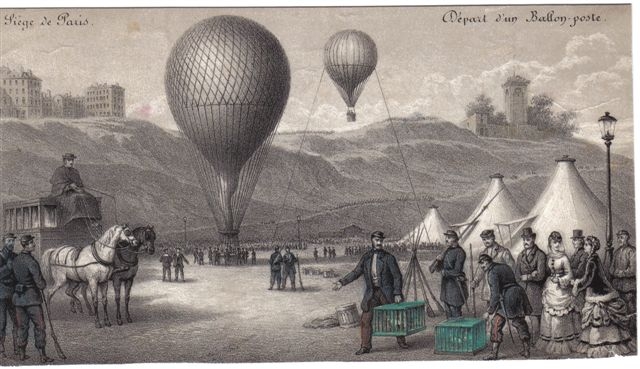
A Message brought to Paris by Pigeon Post in 1870-71
By Ashley Lawrence, UK
The Siege of Paris
On 19th September 1870, Paris was encircled by German armies. For the next four and a half months, Parisians were besieged, trapped in a ring of iron and fire, hardly able to communicate with the rest of France and with the outside world. Balloons were brought into service, and succeeded in carrying quantities of mail out of Paris. The first successful balloon flight was made by “Neptune”, piloted by Jules Duruof, which left Paris on 23rd September carrying official despatches for the Delegation at Tours. On 25th September a second balloon, “Ville de Florence”, piloted by Gabriel Mangin also carried three homing pigeons and these brought messages back to Paris. Thereafter most of the siege balloons which left Paris also took baskets of pigeons. If the balloon landed safely in non-occupied territory, the pigeons were used to carry messages back to the capital. Thanks to the ingenuity of French photographers and to the bravery of her aeronauts, microphotography was applied this pigeon post service, with astonishingly successful results.

Figure 1 : An engraving of baskets of pigeons being brought to a departing balloon]
This is the story of one such message brought by pigeon into Paris.
William James Brown and his partner M. Jourdain owned a business, “The British Warehouse”, which imported and sold articles anglais from premises at 14, rue Halévy in the 9th arrondissement, close to Place de l’Opéra. William Brown remained in Paris throughout the Siege, in order to look after the shop, while his partner, a conscript soldier, served on the fortifications. Margaret Binfield Brown his wife, and their two young daughters, had returned to safety in England .
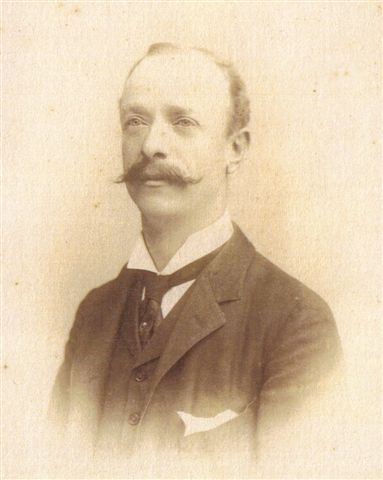
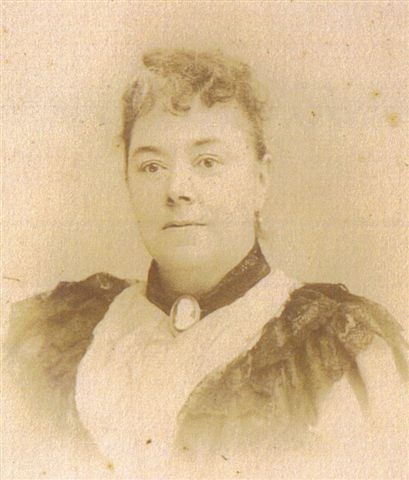
Figures 2(a) and 2(b) : Portraits of William Brown and Mrs. Brown
During the Siege, William Brown wrote a series of letters to his wife. Not knowing her whereabouts, he wrote to her care of the various members of her family and friends in Kentish Town, in Liverpool and in Uxbridge. Many of his letters were sent by balloon, or were entrusted to officials at the British Consulate, or to people who had permission to leave Paris.
On 26th October 1870, William Brown entrusted a letter to Mr. George Kidder, one of a party of Americans who had been granted permission to leave Paris on the following day.

Figure 3 : An extract from William Brown’s letter
In this letter, William Brown asked his wife the following questions :-
Have you what cash you require from Mr. Reed ?
Are you well as also the children and where are you ?
When you return shall you prefer a house like our friends the B’s at Asnières or to return to Blv’d. Bineau, as I can easily arrange for either, but to do so must know soon to get free from Blv’d. Bineau.
Mrs. Brown was able to reply to her husband, thanks to the Pigeon Post.
The three homing pigeons aboard the balloon “Ville de Florence” were supplied by M.Van Roosebeke, a Belgian cobbler who was vice-president of L’Espérance, the Paris Society of Pigeon Fanciers. Two of these pigeons returned to their owner’s loft in rue Saint Martin with messages attached to their tail feathers, reporting on the balloon’s safe landing near Vernouillet, 30 kms from Paris, close to the home of the writer Émile Zola.
L’Espérance supplied most of the carrier pigeons for the Pigeon Post during the early months of the Siege, but later pigeons were also provided by members of the rival Roitelet society. During October and November 1870, several brave officers and members of L’Espérance accompanied their birds on the hazardous balloon journeys out of Paris over enemy lines: M. Traclet with 8 pigeons aboard “Louis Blanc”, and M. Van Roosebeke with 25 on “Washington”, both on 12th October ; M. Cassiers, the President of L’Espérance, with 23 or 24 on “Vauban” on 27th October ; M. Nobécourt with 30 aboard “Daguerre”on 12th November ; and M. Thomas with 34 on “Général Uhrich”, the first night-flight, on 18th November. They risked their lives. The German Chancellor, Bismarck, had issued a warning that any captured aeronauts would be treated as spies, and shot. Although M. Nobécourt was spared this fate when his balloon crash-landed in enemy territory, he was interrogated at Prussian headquarters at Versailles, then imprisoned for five months in Glatz in Silesia.
The Pigeons
Unlike the pilots who released the pigeons from the early balloons, the pigeon-masters from l’Espérance were skilled at handling and managing the birds, and deciding when conditions were suitable for their release. They tended to their birds in Tours (and later in Poitiers, when the Delegation moved to Bordeaux) in preparation for the return journey to Paris. The birds selected for return were taken by train to the safest point of departure – to Blois, 100 miles from Paris, or to Poitiers,180 miles away - to reduce so far as possible the distance they had to fly.
No official records for the Pigeon Post were kept until mid-October 1870. The French Army kept a register, and the Paris newspapers reported on the arrival of pigeons, but it is impossible to reconcile the various figures. At best estimate, of the 400 or so homing pigeons which left Paris by balloon, some 300 arrived safely at Tours, of which only 59 were in a condition to be sent back to Paris. No more than 30 succeeded in making the return journey carrying messages (some making more than one flight).
Poor breeding or poor training may have played a part, but there were other reasons for this apparently low success rate. The pigeons faced bitter cold (the winter of 1870-71 was one of the coldest on record), and became disorientated by the frost, fog and snow, which concealed all visual reference points in the French countryside. Unable to fly by night, the pigeons’ reliability became increasingly erratic as the days grew shorter. There were other hazards as well : the noise and smoke of the Prussian cannon, hunters’ shotguns, and (according to the correspondent from The Times) attack from the hawks and falcons which, with their usual diabolical cunning, the Prussians had brought to intercept them ! The French government made the shooting of pigeons a criminal offence, punishable by 3-5 years imprisonment. Rewards were given for the recovery of pigeons with their messages intact.
Initially, each pigeon carried a single despatch, hand-written on flimsy paper. The first messages were unprotected, and were simply rolled up and tied by thread to the pigeon’s tail feather. Pecked at by the pigeon, or damaged by rain or humidity, they became difficult to read. Before long, messages were inserted inside a goose-quill or thin metal tube, which gave some protection against the elements. A further improvement was the use of letterpress, rather than manuscript, to record messages. By mid- October an eminent chemist in Tours, M. Barreswil, persuaded the postal authorities that if messages could be micro-photographed, many thousands of messages could be carried at a time.
It may, perhaps, come as a surprise to many that the process of microphotography was well-advanced by 1870.
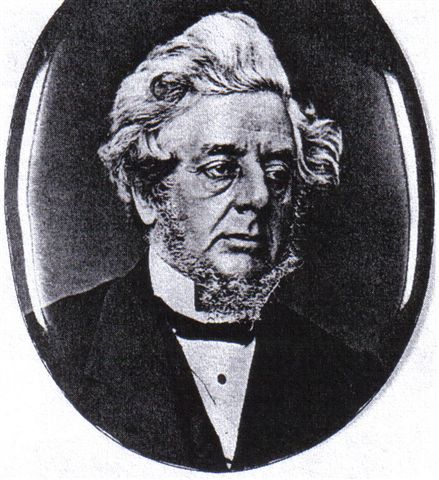
Figure 4 : Portrait of John Benjamin Dancer
John Benjamin Dancer (1812-1887), designer and manufacture of optical instruments, had begun work in this field as long ago as the 1830’s. In 1839, the he pioneered the making of microphotographs mounted on slides for viewing through a microscope. Working in Liverpool, and later in Manchester, Dancer first used the Daguerre process, but the quality of the enlarged photograph was poor, and magnification was limited to 20x. In 1850, Frederick Scott Archer, also of Manchester, introduced the “wet plate” collodion process by which a very fine grain image could be produced on glass plate coated with collodion emulsion and sensitised by immersion in silver nitrate. Dancer used the collodion process to produce vastly improved microphotograph slides. He photographed well-known paintings and portraits down to 1mm. square, and sold some 500 of such slides, the novelty being that a microscope should be used to see them in larger size. Manufacturers soon produced pinhead-size slides affixed to pencils, rings and other jewellery, mounted beneath a small magnifying lens. In 1857, the Scottish physicist Sir David Brewster exhibited Dancer’s microphotographs to the Académie des Sciences in Paris, and wrote an article extolling Dancer’s achievements in the Encylopaedia Britannica. In 1859, Dancer exhibited his microphotograph slides (including a portrait of Napoleon III by Sir William Ross), stereoscopic camera lenses and other optical inventions at the Palais de l’Industrie in Paris.
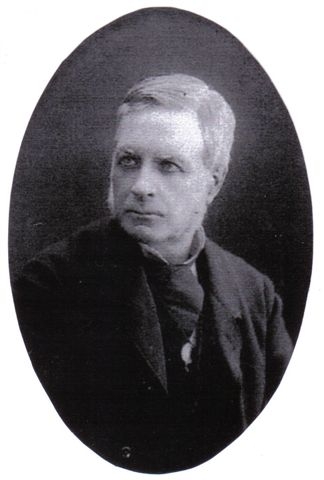
Figure 5 : Photo of Dagron
René Prudent Patrice Dagron (1819-1900) was born in Beauvoir, now Aillières-Beauvoir, but left to settle in Paris, where he studied physics and chemistry. He became interested in photography and soon mastered the chemical processes and techniques. In the course of his experiments he invented an improved form of microscope and, seeing the commercial potential for micro-photographic novelties, he worked to perfect the means of producing miniature photographs. He would certainly have been aware of Dancer’s work. Dagron wrote “ Traité de Photographie Microscopique ” which was published in Paris in 1864. He presented microphotographs of a remarkable standard at the Paris International Exhibition of 1867. Of particular note was a microscopic photo, 1mm. square, on which were engraved the portraits of 450 Deputies! As in England, Dagron’s process was used for decorating jewellery, such as the “Stanhope” ring which sold in great quantity at the Exposition, and enhanced his commercial and scientific reputation.
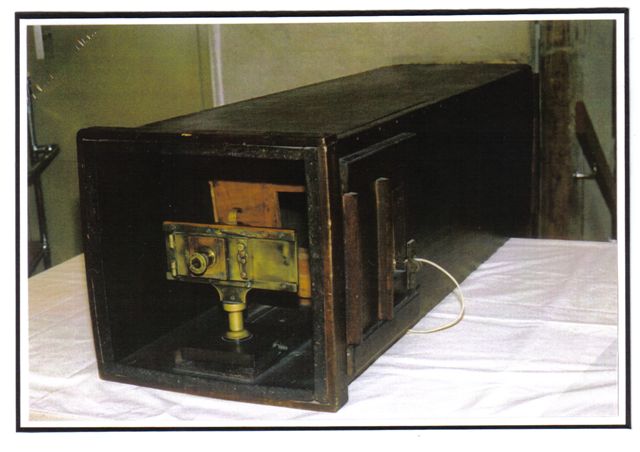
Figure6 : Illustration of Dagron’s camera
Having patented his invention to gain protection from imitators, Dagron was keen to merchandise his products and to offer his equipment for sale to the public. I am grateful to Jean and Ken Scott for the technical description which follows. The camera was made of brass, and was screwed into place at one end of a large box-shaped tube strongly constructed of wood. At the far end was a rectangular opening over which the glass negative plate was clamped. This held the image that was to be micro-photographed and multiplied many times. The tube was placed against the window, with the glass plate in full daylight.
On the front of the camera was the microscope viewing lens and control, which enabled the photographer to focus on the image plate. Behind this was a chamber enclosing a sensitised glass plate held in a movable copper frame. Dagron sensitised the glass plate with collodion, then covered it with a film of albumin or egg-white, which prevented the plate from losing its sensitivity to light as it dried out. Light was reflected onto the plate through groups of small lenses behind the camera. After exposure, the plate could be moved horizontally or vertically to allow further copies or series of images to be made. The number of lenses varied : the largest cameras contained 25 lenses, which enabled professional photographers to make 450 images on a single glass plate. Dagron suggested that time of exposure would vary between one and three seconds, “depending on the weather!”
The weather during the Siege of Paris in 1870-71 was atrocious, one of the coldest winters on record, but the conflict did Dagron’s reputation the world of good, as we shall see !
Nadar
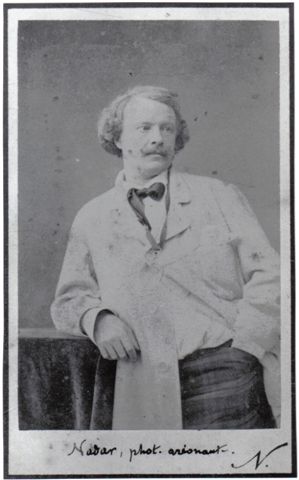
Figure 7: Photo of Nadar
The Franco-German War was also significant for the career of Gaspard Félix Tournachon (1820-1910), better-known by his pen-name Nadar. An expert photographer, Nadar opened a portrait studio in Paris in 1853, took the first aerial photographs from a balloon in 1856 and patented their use for map-making and surveying. He also took photographs of the Paris sewers by electric light. A great showman, caricaturist and self-publicist, he befriended eminent writers and artists, and became the finest photographic portraitist of the 19th century. Nadar was also an expert balloonist, and on the outbreak of war in 1870, together with Camille Dartois and Jules Duruof, he founded the Compagnie des Aérostiers for the construction of balloons for the postal service. Nadar had seen examples of Dagron’s work at the Exposition of 1867.
The Pigeon Post
On 7th October, the ambitious republican politician Léon Gambetta escaped from Paris aboard the balloon “Armand Barbès” to head the Delegation at Tours. Two days later, aided by a local photographer M. Gabriel Blaise, Gambetta was able to send the first micro-photographed message by pigeon to Paris. On 12th October, Gambetta appointed François-Frédéric Steenackers as Director-General of Telegraphs & Posts. M. Steenackers strongly supported the use of pigeons to carry official despatches. He ordered that all pigeons be brought directly to Tours, by special train if necessary, rather than be used merely to report the balloon’s safe landing. M. Steenackers also recognised that microphotography could vastly improve the Pigeon Post service, and applied the process to all official despatches sent from Tours. From 15th October, all messages for Paris were entrusted to M. Blaise, who printed them on photographic paper in small size, readable with a magnifying lens.
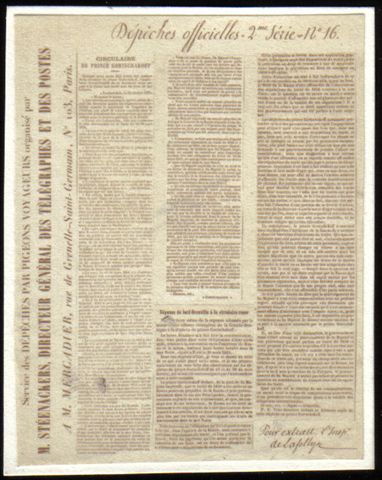
Figure 8 : An official despatch on photographic paper
Meanwhile in Paris, the energetic Nadar thought of René Dagron and put him in touch with the Director-General of Posts, M. Rampont-Léchin. The Director-General appreciated the invaluable contribution which microphotography could make to communications, and persuaded M. Dagron to join the government delegation in Tours, and to apply his expertise to the Pigeon Post. M. Rampont also had his own motive for promoting Dagron : he wanted to assert his independence from Tours, where his rival M. Steenackers, Director-General of Telegraphs, had set up the competing process with M. Blaise.
A contract was concluded, and signed by M. Picard, the Minister of Finance, by which Dagron was to receive 15 francs for every 1,000 characters he photographed, and would set up his operations at Clermont-Ferrand. Dagron would receive 25,000 francs for undertaking the balloon flight, to be paid by the Delegation at Tours, and in the event of his death during the hazardous journey his widow would receive an annual pension of 3,000 francs for life.
Dagron, his son-in-law Poisot, his assistants Fernique and Gnocchi and about 600 kgs of photographic apparatus, duly left Paris at 9.00am on 12th November 1870 aboard the balloon “Niepce”, piloted by a sailor, Pagano. A second balloon, “Daguerre”, left at the same time with a pilot and three passengers (one being the unfortunate M. Nobécourt), some pigeons and the balance of the equipment. A strong breeze carried the balloons eastwards across the Prussian lines. “Daguerre” was shot down just a few miles from Paris, near Ferrières. “Niepce” made a heavy landing later that afternoon near Vitry-le-Français, in enemy-occupied territory, and much of the equipment was damaged or captured. Dagron and his companions became separated but managed to escape capture, and Dagron eventually reached Tours on 21st November. He reported to Gambetta who sent him to Steenackers.
In Tours, Dagron faced further difficulties. He had to demonstrate to M. Steenackers that his reproduction of messages on microfilm was superior to the microprints on double-sided photographic paper produced by M. Blaise. Lacking equipment and materials, Dagron was not able to demonstrate the microdots which had so impressed Rampont (the images prenant le nom du point, by which a page of the Moniteur could be reproduced in 1 sq.mm). However, he achieved a reduction of more than 40 diameters, which was a great improvement on the reduction obtainable by M. Blaise. The Blaise process reduced a page of letter-press to 37 x 23mm on photographic paper : Dagron was able to reduce the same page to 11 x 6mm. on much lighter collodion film which permitted the microscopic printing of messages. Dagron’s method needed a very short exposure time, two seconds, rather than the two hours required by M. Blaise, and allowed for greater reduction; and his microfilms (“pellicules”) were lighter in weight and gave a clearer image when enlarged. On an ultra-light pellicule of collodion about 15 cm. square, weighing about 0.05gm, Dagron succeeded in reproducing 12 or 16 folio pages of printing, containing some 3,000 despatches.
M. Steenackers ordered Dagron to remain with the Delegation, both in Tours and later in Bordeaux. He repudiated the contract that Dagron had agreed with M. Rampont, and insisted on renegotiating its terms. Under the new arrangement, Dagron received a payment of 52,000 francs for his services and took charge of operations, under the supervision of M. Charles de Lafollye. Despite the changes in his terms of engagement, Dagron insisted on being recognised as the only official photographer of despatches on microfilm.
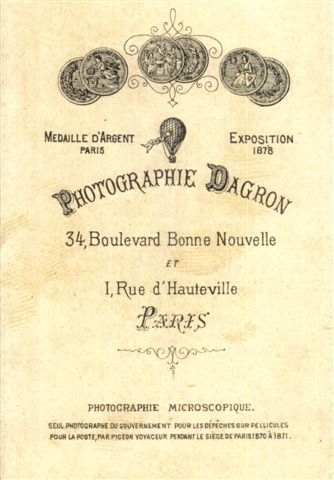
Figure 9 : An enlargement of the back of Dagron’s Carte de Visite
The system of micro-photographing official despatches proved so successful that on 4th November a decree was issued by the Delegation in Tours, signed by Gambetta and Steenackers among others, permitting members of the public to send messages by the Pigeon Post to Paris. The charge was 50 centimes per word for no more than 20 words. This tariff was soon reduced to 20c, and later to 10c, then 5c per word.
On 16th November, the General Post Office in London published a similar notice (Post Office Notice No. 64 of 1870).
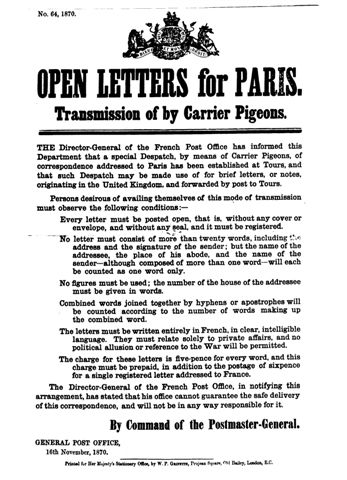
Figure 10 : The Post Office Notice of 16th November 1870, setting out the conditions for the transmission of open letters for Paris by carrier pigeon.
For private messages originating in Britain, the charge was 5d. per word, plus 6d. for registration of the letter to Tours. Letters were restricted to Twenty words, but the signature of the sender and name and address of the recipient each counted as one word. The message had to be in French and to relate solely to private affairs, with no reference to politics or to the war. Delivery of the message was not guaranteed !
The messages were assembled in typeset characters (letterpress) by printers, and photographed in Tours until 10th December when, threatened by the advancing German army, the government delegation withdrew to Bordeaux. Official despatches had absolute priority. Work started at noon, and by 5.00 pm. the official messages were ready, then attention was given to the private messages. Each microfilm measured 3.6cm x 6 cm, and reproduced nine, twelve or sixteen folio pages of printing, each containing on average 3,000 messages, according to the size of type. The microfilms were placed in goose-quill tubes (and later in light-weight metal tubes) some 1½ to 2 inches in length, and affixed by strong, waxed silk thread to the pigeons’ main tail-feathers. Each pigeon could carry between 12 and 18 such pellicules, as the total weight was less than one gram.
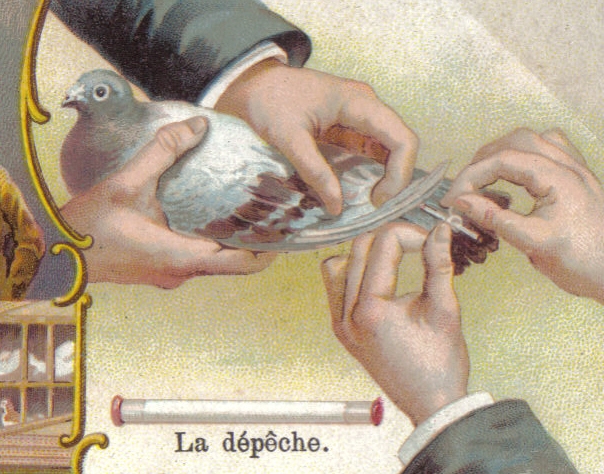
Figure 11 : Affixing a pellicule to a pigeon’s tail feathers
The pellicules were numbered consecutively, and to compensate for the high number of pigeons lost, copies were sent by successive pigeons until acknowledgement of their arrival was received. Official messages were sent up to 10 times, but private ones were repeatedly sent from 20 to 30 times.
The pigeons were taken by train as close to Paris as was safe from German interception, and were then released. Once they reached their lofts in Paris, the pigeons were handed over to postal clerks who took them to the main post office, Direction Générale des Postes, in rue Jean-Jacques Rousseau. There the quills were removed and taken to General Trochu, the Governor of Paris, or to M. Mercadier, Engineer Director of Telegraphic Services at the Central Telegraph Office at 103, rue de Grenelle, under whose supervision the quills were cut open with a sharp penknife, and the pellicules were removed.
Each microfilm was placed in a basin of water, mixed with a little ammonia. This caused the film to unroll so that it could be dried and placed between two thin glass plates, forming a transparency. The microfilm was projected onto a white wall or screen by means of the Megascope, a type of magic lantern invented by M. Jules Duboscq, which magnified the image 160 times.
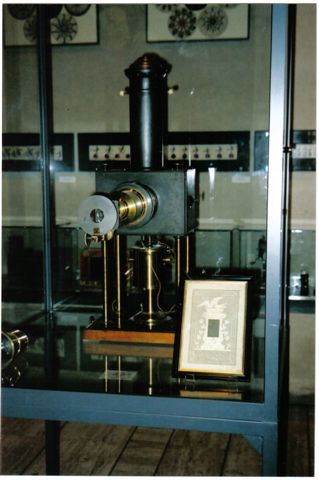
Figure 12 : Photograph of the Duboscq Megascope
The photograph of the Duboscq Megascope was taken at the Nicéphore Niepce Museum of Photography at Chalon-sur-Saone.
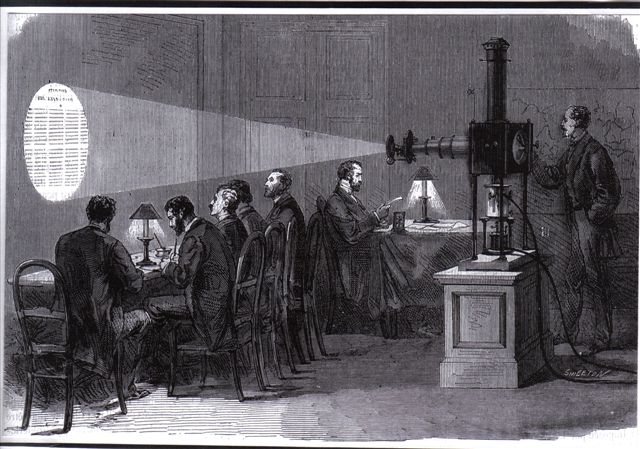
Figure 13 : An engraving showing the projection of the microfilm by the Duboscq Megascope
A battery of clerks transcribed the individual messages onto blue telegraph forms, inscribed Reçu par Pigeon, which were then delivered to the addressees by ordinary local mail. The operation for each batch of pellicules took about nine hours.
Mrs. Brown may have seen the GPO notice of 16th November, or the announcement of the Pigeon Post service that was published in The Times on the following day. Mrs. Brown wrote a short message to her husband from her sister’s home in Uxbridge, being careful to count the number of words, and signed it “Maggie”. The message was handed in to the Post Office at 26, Oxford Street, near Rathbone Place, London W1 on 19th November. The message, addressed to Mr. Brown in Paris, was to be sent by registered post, and the illustration shows the receipt that was issued by the Post Office. The pencilled notation on the receipt shows that the clerk checked the number of words and calculated that the charge amounted to Eight shillings and Ten pence (8/10d), being 20 words @ 5d, plus 6d registration fee.
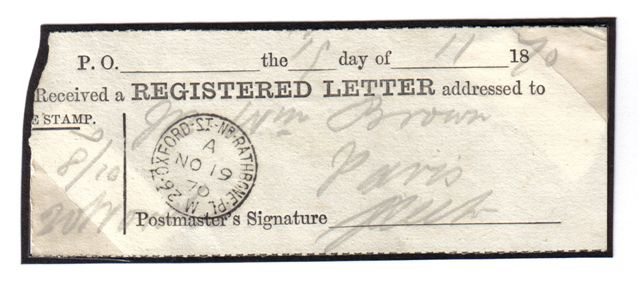
Figure 14 : The GPO receipt for Mrs. Brown’s registered letter, issued on 19th November 1870
GPO records show that 64 such messages were sent from London to France on 19th November. The letters were taken by train to Dover, crossed the Channel by steamer to Calais and thence by rail via Amiens to the French postal authorities in Tours. Mrs. Brown’s message was recorded as having been received in Tours on 26th November. The private messages were not processed immediately. Instead they were taken to Bordeaux, when the Germans forced the Delegation to retreat on 10th December.
M. de Lafollye, who supervised the operation of the Pigeon Post service, noted the various stages of the process : registration of the message; delivery to the printers for typesetting of some 3,000 messages onto a single page; assembling of pages into blocks of nine, twelve or sixteen ready to be photographed. These stages rarely took less than a fortnight. It was then necessary to await suitable weather conditions for the release of the pigeon.
The messages from England were set up in type and micro-photographed in Bordeaux on 2nd January 1871. The records show that the pigeon carrying these messages was released at Saint-Pierre-des-Corps (Indre-et-Loire) on the morning of 8th January and arrived in Paris that same evening. M. Steenackers was notified of the pigeon’s arrival on 10th January, by letter carried aboard the balloon “Gambetta”.
On 12th January, the microfilm was projected by Duboscq Megascope at the Grand Hotel in Paris, and more than 30,000 individual private messages were transcribed onto blue telegram forms. The Grand Hotel at 2, rue Scribe, had become the headquarters of the Ambulance Internationale during the Siege, and some rooms were used by the Telegraph Service for processing the microfilmed messages brought by the Pigeon Post. The telegram containing Mrs. Brown’s message, marked “Pour Paris de Londres, Déposé le 26 novembre, Reçu par voie pigeon” was duly postmarked and delivered to Mr. Brown later that day. The messenger did not have far to travel as Mr. Brown’s premises in rue Halévy were just a short walk across the Place de l’Opéra from the Grand Hotel!

Figure 15 : The Telegram and its envelope, delivered to Mr. Brown in Paris on 12th January 1871
This was the first communication that William Brown had received from his wife since the start of the Siege. Desperate for news, he was delighted and reassured by the contents of the telegram, which gave clear answers to the questions posed in his letter of 26th October. The message had come from Uxbridge (the French clerk had transcribed this as Asbridge), which meant that Margaret Brown and the children were staying with her sister Elizabeth (“Betty”), a photographer; and according to the telegram, all were well. “Je tiré sur reed ” meant that his wife had received the funds she needed from a friend Mr. Reid. “Donnez congé boulevard Bineau” was his wife’s instruction to give notice to their landlord that the Browns did not wish to renew their tenancy of a property in Boulevard Bineau, which was due to expire in April 1871. In the event, the district of Neuilly-sur-Seine to the west of Paris, where the property was situated, was badly damaged during the Prussian bombardment of the city and in the later suppression of the Commune.
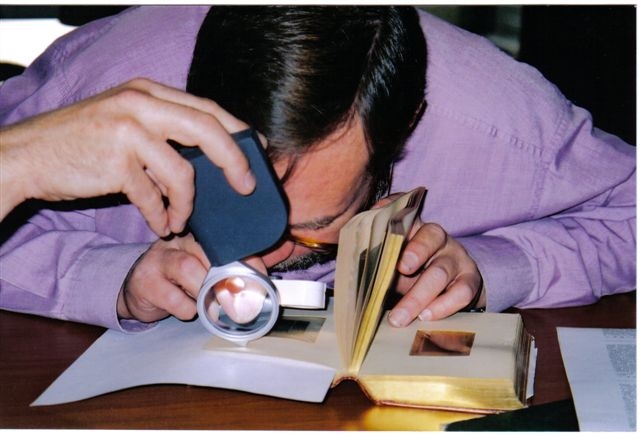
Figure 16 : Identifying the pellicule in the archives at Musée de la Poste in November 2001
During my research into the William Brown correspondence in Paris, I visited the Musée de la Poste at 34, rue de Vaugirard, by appointment, in order to inspect the archives relating to the Pigeon Post. The Musée staff were surprised, but very co-operative. Thanks to their help, much patience, eye-strain, and the aid of a powerful magnifying-glass, I was able to identify the very pellicule which contained Mrs. Brown’s message ! This is illustrated, together with the relevant extract from the official record of the pigeongrams, “Recueil des Dépêches Télégraphiques” written by M. de Lafollye, Inspector of Telegraphs, in 1871. The position of Mrs. Brown’s message is indicated by the arrows.
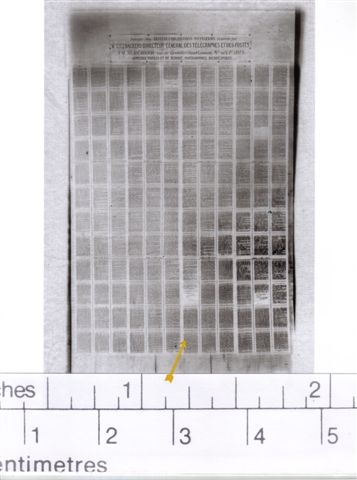
Figure 17 : The pellicule containing Mrs. Brown’s message.
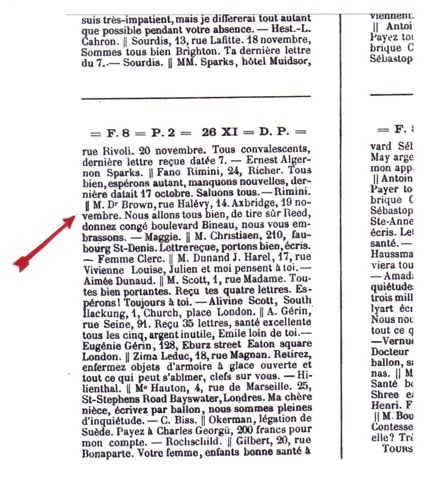
Figure 18 : an extract from the official record of the pigeongrams showing Mrs. Brown’s message.
The Pigeon Post Service
There is a popular impression that the Pigeon Post service was speedy, and it is true that the first private messages did reach their destination quickly. The efficiency of the service is illustrated by an order that Dagron made for some chemicals from the firm of Poulenc & Wittman in Paris. A pigeon released near Poitiers on 18th January flew the order 185 miles into Paris in twelve hours. The chemicals were duly assembled, and left the city aboard the balloon “Général Bourbaki” at 5.15am on 20th January. The balloon came down near Reims in occupied territory at 2.00pm, and was burned to prevent its capture, but the pilot, Theodore Mangin, delivered the chemicals to Dagron’s studio on 24th January – a service perhaps faster than in peacetime. However, much depended on the volume of despatches and prevailing weather conditions, and the period from the handing-in of a message to its eventual delivery could easily span two months.
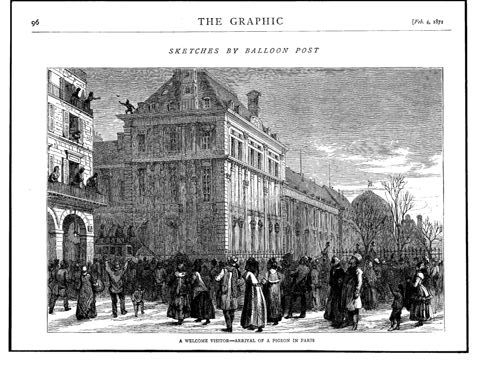
Figure 19 : An illustration from “The Graphic” of 4th February 1871 : “A Welcome Visitor - Arrival of a Pigeon in Paris”.
Nevertheless, the service was a considerable achievement. According to De Lafollye, 95,581 messages were sent by pigeon post to Paris during the Siege. Many copies were made, to ensure that the messages were received. According to Dagron’s estimate, including the copies, more than 2,500,000 official despatches and private messages were reproduced and sent during the last (and worst) two months of the Siege.
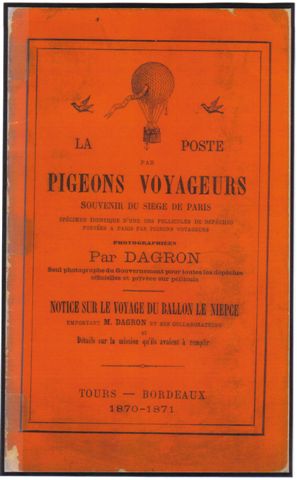
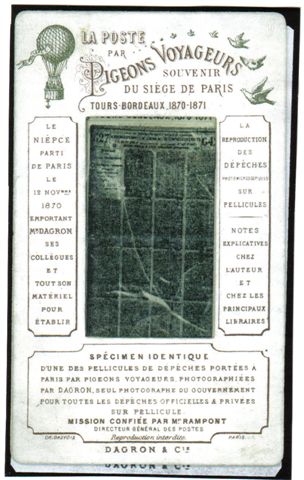
Left. Figure 20 : the cover of Dagron’s book,
Right. Figure 21 : The Dagron simulacre;
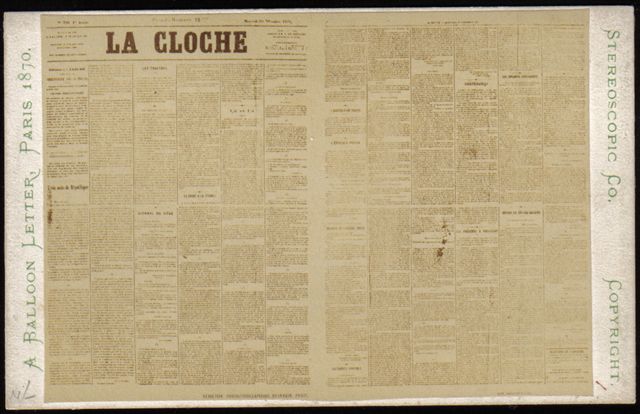
Figure 22 : souvenir of “ La Cloche”,
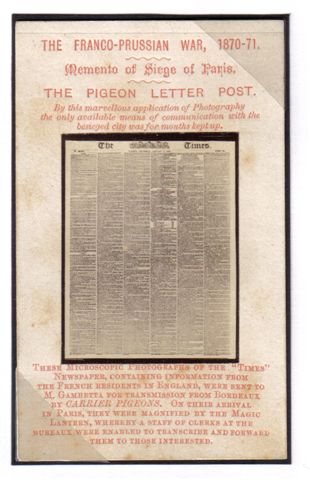
Figure 23 : souvenir of “The Times”]
Afterwards Dagron wrote an account of his adventures, “La Poste par Pigeons Voyageurs”. Aggrieved that he was not properly recompensed for his services, either financially or by being awarded the Légion d’honneur, he insisted on being recognised as the sole government photographer of all despatches on microfilm carried by the Pigeon Post during the Siege, and publicised his role on his cartes de visite and on the souvenir cards which he issued after the Siege. The illustration shows one such souvenir card, the Dagron simulacre, which could be bought from Dagron’s company or from bookshops. The card contains a reproduction of a pellicule, with a title page and fifteen pages of letterpress private messages.
Messrs. Steenackers, Rampont-Léchin and De Lafollye also wrote their own memoirs. These revealed the rivalry and antagonism which existed between the Ministries of Posts and Telegraphs, made worse by the disrupted communication between Paris and Tours. Copies of almost all of the official and private despatches were assembled, mounted by series and number, and bound on the express orders of M. de Lafollye, and are held at the Musée Postal. It was intended that an historian, M. Feillet, would write a formal report on the Pigeon Post, and he took charge of the official documentation. Tragically, this was destroyed when his house in Neuilly was shelled during the suppression of the Commune in May 1871.
On 6th February 1871, the Pigeon Post service was ended on the instructions of the Director-General of Posts. Surviving pigeons were later sold at public auction for as little as three francs each. This was a fraction of the 36,000 francs negotiated by the lawyers and paid by way of compensation to members of L’Espérance, leading to accusations that some (unnamed) members had made excessive profits by selling inferior pigeons to the postal service at too high a price! The few surviving birds whose wings were imprinted with their owner’s name and serial number were reclaimed.
M. Cassiers, the president of L’Espérance, had supplied 52 of his prize pigeons for the service, of which only two survived the war. One of these is preserved in the Musée de la Poste. First taken aboard the Général Uhrich on 18th November 1870, it had returned from Orléans with messages on 23rd November, and had later made at least one more journey carrying despatches into Paris. It is just possible that this was the pigeon that brought Mrs. Brown’s message into Paris !
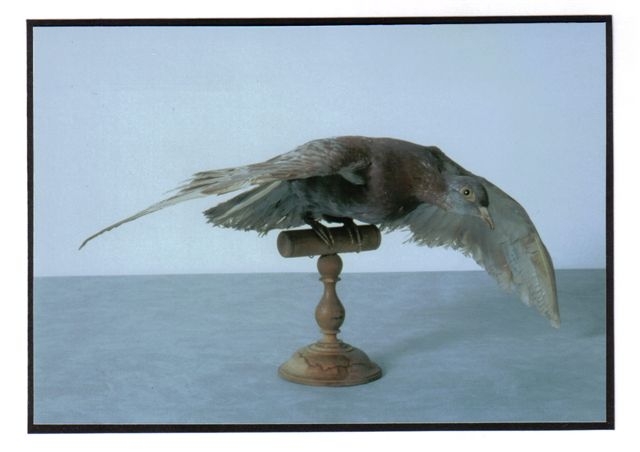
Figure 24 : M. Cassiers’ Pigeon, preserved in the Musée de la Poste
The Pigeon Post was one of the few French success stories of the war of 1870-71. The arrival of the carrier pigeons bringing news from family and friends in the outside world did much to restore morale of the Parisians during the worst weeks of the Siege.
The armies of other European powers noted the success of the Pigeon Post, and established their own pigeon sections that proved their usefulness in later wars. The advent of wireless and other forms of communication has not entirely displaced the carrier pigeon.
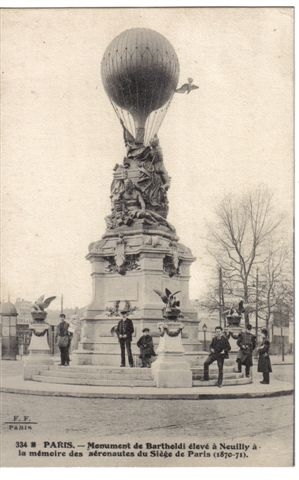
Figure 25 : A postcard of the Monument to the Aeronauts and Pigeons of the Siege of Paris.
A proposal that pigeons be added to the Paris coat of arms was not adopted. However, the pigeons’ bravery, together with that of the aeronauts, was commemorated by the issue of medals, and by the erection of a fine bronze monument. The monument, funded by public subscription, was designed by Frédéric-Auguste Bartholdi, the designer of the Statue of Liberty, and was unveiled at the Porte des Ternes in Neuilly in 1906. Around the central representation of a balloon were four pedestals, each one bearing a pair of pigeons. Sadly, in 1944 the German occupiers of Paris were offended by this splendid monument, and it was demolished.
© Ashley Lawrence 14th September 2010
Source material
1. William James Brown correspondence, 1870-71, and my thanks for the kind assistance given by his great-grandson Peter and the Brown family.
2. “The Post by Travelling Pigeons, A Remembrance of the Siege of Paris” by Dagron, 1871.
3. “Recueil des Dépêches Télégraphiques reproduites par la photographie et adressées à Paris au moyen des Pigeons-Voyageurs pendant l’investissement de la Capitale, Tome 1, Tours-Bordeaux 1870-71”
4. “Dépêches par Pigeons Voyageurs pendant le Siège de Paris. Mémoire sur la Section Photographique et Administrative du Service de ces Dépêches par M. de Lafollye, Tours 1871”
5. “The Pigeon Post into Paris, 1870-71” by J.D.Hayhurst OBE 1970.
6. “Pigeon Mail through History” by Salvador Bofarull, published by The Stuart Rossiter Trust Fund, 2001.
7. “Airlift 1870” by John Fisher, published by Max Parrish & Co. Ltd. 1965.
8. “Stanhopes : A Closer View” by Jean Scott published by Greenlight Publishing, 2002.
9. This is an expanded version of my article that was first published in The Journal of the France & Colonies Philatelic Society in June 2002.
Published in the
October 2010 edition of Micscape.
Please report any Web problems or
offer general comments to the Micscape
Editor.
Micscape is the on-line monthly magazine
of the Microscopy UK web
site at Microscopy-UK
© Onview.net Ltd, Microscopy-UK, and all contributors 1995 onwards. All rights reserved. Main site is at www.microscopy-uk.org.uk .